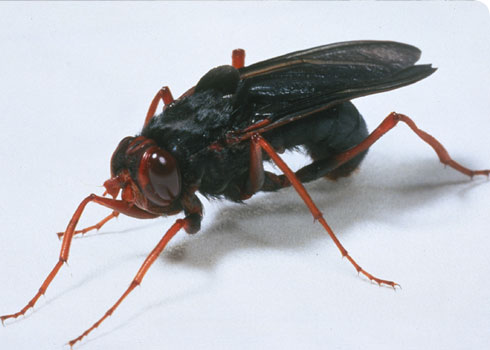Gyrostigma rhinocerontis (rhinoceros bot fly)
Adults of the rhinoceros bot fly, Gyrostigma rhinocerontis, are dramatically large flies - the largest in Africa.
Their larvae are obligate parasites, developing only in the stomachs of living rhinoceroses.
Despite their large size, adults live only for a few days (3–5 days in captivity) because they have very reduced non-functional mouthparts and do not feed.
Within that short life span, female flies have to locate a male, mate and then find a new rhinoceros host for their eggs.
As rhinoceros numbers decline so do the numbers of these flies, and should rhinos become extinct, the flies would probably disappear too, providing an example of co-extinction.
Species detail
-

Taxonomy
Adult rhinoceros bot flies are large and resemble large spider wasps. Find out what their larvae look like and how they vary in colour as they develop.
-

Distribution
These flies are found wherever their rhinoceros hosts live. Find out more.
-

Biology
The adult fly lives for less than a week and does not feed, whereas its larvae live for months in a rhino’s stomach. Discover more about the life-cycle of this parasitic fly.
-

Behaviour
Adult rhinoceros bot flies are rarely observed in the wild. Find out what we know about their egg laying behaviour and the larvae that mature in the rhino stomach.
-

Conservation
As rhinoceros numbers have declined, so too has this fly. And because it is dependent on the rhino, it would disappear if rhinos became extinct. Find out more.
-

References
Get reference material for Gyrostigma rhinocerontis.
Images
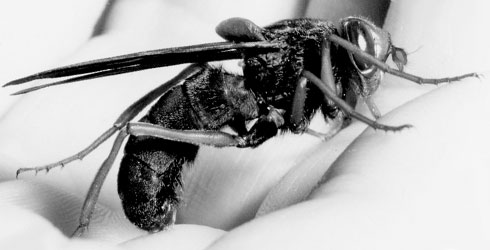
Gyrostigma rhinocerontis adult perched on a hand, courtesy of Charles Dewhurst.
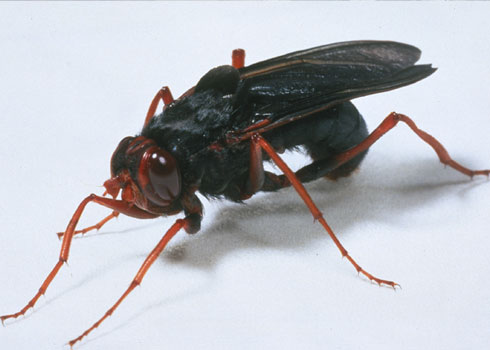
Adult Gyrostigma rhinocerontis.
© Natural History Museum, London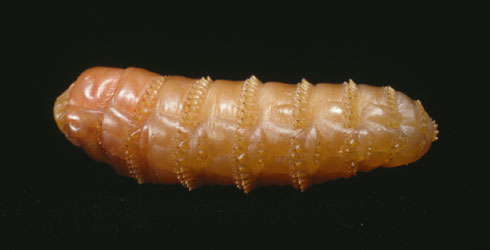
Gyrostigma rhinocerontis - lateral view of third instar larva.
© Natural History Museum, London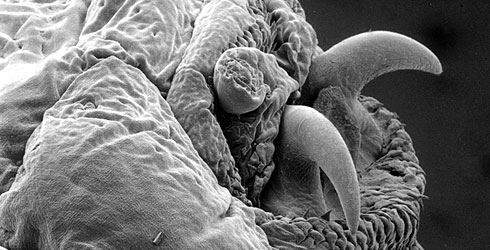
A scanning electron microscope (SEM) image of the cephalic and first thoracic segment of the third instar of Gyrostigma rhinocerontis.(Courtesy of Dr Doug Colwell)
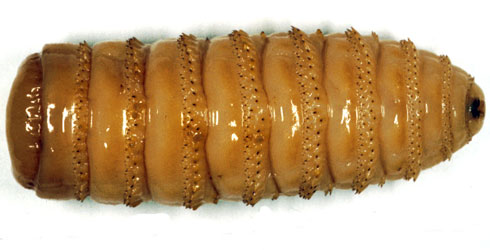
Gyrostogma rhinocerontis - ventral view of third instar larva. Courtesy of Dr Doug Colwell.
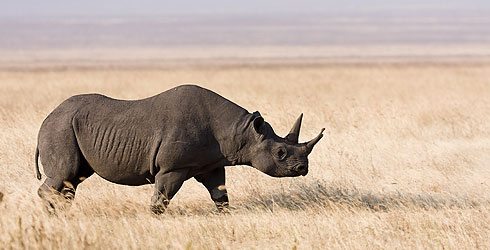
Black rhinos are hosts to Gyrostigma rhinocerontis
© Ikiwaner, GNU Free Documentation License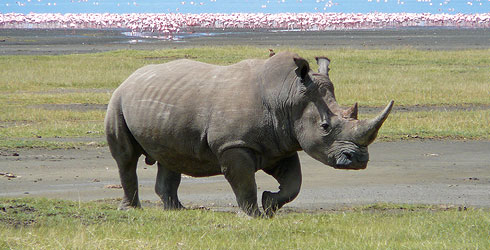
The white rhino is a host for Gyrostigma rhinocerontis.
© Ryan Harvey, Creative Commons Attribution-Share Alike 2.0 Generic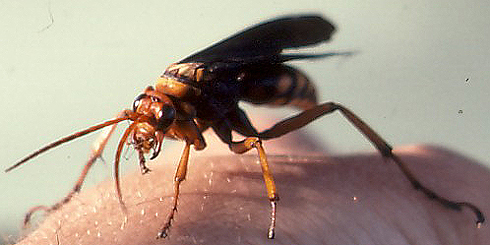
Pompilid spider wasp, similar to those that the Rhinoceros bot fly resembles, resting on the author's hand in Darfur, Sudan.
© M HallAuthor

Dr Martin Hall
Biomedical research entomologist specialising in flesh-eating flies, myiasis, forensic entomology and tsetse and tabanid flies.
A word from the author
"Because it is so rare to see these flies even in Africa, I felt very privileged to rear an adult from live larvae that were sent to me for identification from a safari park in England. When the fly emerged all it wanted was a mate and a rhinoceros - sadly I could provide neither and it is now a pinned specimen in our collections!"
